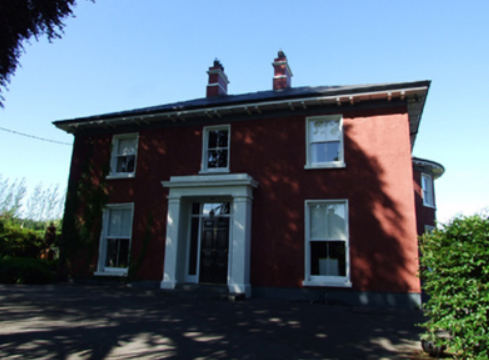Ballyconnell Castle/House
Houses within 5km of this house
Displaying 10 houses.
Houses within 5km of Ballyconnell Castle/House
Displaying 10 houses.
| House name | Description | |
|---|---|---|
| Glendoon | At the time of Griffith's Valuation Moses Netterfield held offices and land in the townland of Doon, Ballyconnell, county Cavan, part of the estate of the Earl of Annesley. The National Inventory of Architectural Heritage describes this building as an 'early nineteenth-century house of simple Italianate design'. |

|
| Ardue House | Ardue House was the home of the Clemengers, a family of German origin, throughout the 19th century. Mr Clemenger was resident in 1814 and Alexander Clemenger in the 1850s when the house was valued at £13 and held from James H. Story. Henry Taunt Clemenger and his unmarried son John James were resident in 1911. The house was located between Killywilly Lough and Tomkinroad Lough. The site is now a green field. | |
| Killywilly House | Killywilly House located between Loughs Killywilly and Cuillaghan is named on the first edition six inch Ordnance Survey map (publ. 1837). A corn mill and bleach mill were nearby in the townland of Ardue. James Berry was the occupier in the 1850s. He held the property from James H. Story and the buildings had a rateable valuation of £18. This house is no longer extant. | |
| Glenview (Drumlane) | Glenview House was built in the 1840s or 1850s. Captain Michael Phillips owned and occupied it and it had a rateable valuation of £11.10.0. Home of the Ebbitt family at the beginning of the 20th century but no longer extant. | |
| Ture Lodge | Ture Lodge, facing east onto Clonamullig Lough, was the home of John Mont. Jones in 1814. Cavan newspapers refer to David Griffith as the occupier in 1847 and Joseph Knight in 1850. The house was vacant when surveyed for Griffith’s Valuation. Myles Reilly was the immediate lessor holding from James H. Story. The buildings were valued at £18. In 1876 Mrs Sarah Story owned 814 acres in county Cavan, while James Story of the same address owned 405 acres. This house was marked ‘in ruins’ on the 25 inch map of the early 20th century. | |
| Woodville (Templeport) | Woodville was another Finlay home, built to the north east of Corville circa 1840s. At the time of Griffith’s Valuation it was valued at £12 and was occupied by Francis Finlay who held it from George Finlay. A building still stands on this site. | |
| Lissanover | Members of the Hume family of Lisanober or Lissanover, Co Cavan (and of Castle Irvine, Co Fermanagh) are recorded in the 18th century, see GO MS 141: 102-104. Robert Hume of Linover died in 1777 and was buried in Templeport graveyard. In the 1830s J. Roycroft was resident at Lisnover and in the 1850s Robert Roycroft held the property from William Blachford. It was valued at £12.10.0. for rates. This house was demolished by the early 20th century. | |
| Slieve Russell House | Slieve Russell House was a two storey Victorian lodge, built about 1880 for the Benison family. John Joseph Benison and family were resident in the early years of the 20th century. The house is now derelict. | |
| Berrymount | Berrymount House is named on the first edition six inch Ordnance Survey map (publ. 1837). James Berry was resident in the first half of the 19th century. He held the house and outbuildings valued at £7 from the representatives of John C. Jones. William Berry of Berrymount owned 134 acres in co Cavan in 1876. The Berrys were selling Berrymount in the early 1890s (Irish Law Times and Solicitors Journal, Vol 27, 615). Alexander Morton and family were living at Berrymount in the early 20th century. The house appears to be still extant. | |
| Cranaghan House | Cranaghan House is marked on the first edition six inch Ordnance Survey map (publ. 1837). The 25 inch map of the early 20th century records it as a rectory. The Reverend J. Story of Cranaghan is named on the list of subscribers to Lewis’ ‘Topographical Dictionary’ in 1837. The Reverend Henry Erskine held the house valued at £25 in fee at the time of Griffith’s Valuation. The Reverend Charles Sinclair and the Reverend Mervyn Rogers were the occupants in 1901 and 1911. This building is now the core of the Slieve Russell Hotel. |

